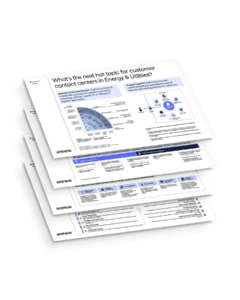Journey orchestration in pharmaceutical marketing (Blog 4 of 4)
Eraneos is bringing a series of blogs on the topic of journey orchestration in pharmaceutical marketing. We start with talking about this concept and then dive deeper into the different aspects to consider such as omnichannel, customer journey, digital capabilities and organizational change and learning. If you find this interesting, follow our LinkedIn page or register for our newsletter so you can stay up to date.
This is the fourth blog in our customer journey orchestration series. We explored what the concept is and its digital requirements for effective journey orchestration in blog #1 and #2. In the third episode, we examined how the omnichannel strategy relates to journey orchestration. In this blog, we focus on the importance of measuring success and its crucial role in effectively deploying journey orchestration.
Implementing journey orchestration can be a multifaceted process, requiring careful consideration of organizational change management. Success hinges on a smooth transition and the embrace of a new operational approach. In this article, we aim to spotlight the significance of measuring success and its pivotal role in the effective deployment of journey orchestration.
The importance of measuring success
Monitoring and evaluating the progress and impact of a journey orchestration program involves defining and tracking key metrics aligned with your business goals and customer outcomes. Here are distinct categories of metrics to consider:
- Journey Metrics: Performance indicators measuring the effectiveness of journeys. Examples: Number of journey instances, completion rate, conversion rate, cost, and ROI.
- Delivery Metrics: Metrics assessing the execution and engagement across various channels. Examples: Number of deliveries, delivery rate, open rate, click-through rate, bounce rate, and unsubscribe rate.
- Customer Metrics: Metrics gauging customer behavior and satisfaction. Examples: Number of customers, retention rate, churn rate, lifetime value, satisfaction score, and net promoter score.
- Segment Metrics: Metrics analyzing characteristics and trends of customer segments. Examples: Segment size, growth rate, revenue, cost, and profitability.
Identifying relevant metrics
While these categories cover essential areas, understanding the unique needs of your business is crucial. Consider these aspects to tailor your measurement approach effectively and align it closely with your business priorities and desired outcomes. Reflect on what additional metrics might be pertinent to your specific objectives. What is missing? What type of metric would best complement and enhance your business strategy?
Get in touch with our specialist, Wilco Bothof, to discover the importance of measuring success and its crucial role in effectively deploying journey orchestration.




